Hi! I'm Really Fond Of Researching About Hanfu And Its History, And I Found A Lot Of Interesting Information
Hi! I'm really fond of researching about hanfu and its history, and I found a lot of interesting information on this blog. But I can't help it and keep wondering about the reason for qipao/cheongsang not be considered a hanfu? When I researched about it the most common argument is the Manchu influence on it. However, there are a plenty of hanfu styles that were influenced by other cultures. Is there a more especific reason for not consider the qipao?
Hi, thanks for the question, and glad you like my blog! (x)

I want to start off with an important disclaimer:
The term “hanfu” as we use it today (defined as “traditional Han Chinese clothing”) does not have the exact same meaning as when it was used historically. As @audreydoeskaren explains in this post, “while it is true that the term “hanfu” was used in some historical texts, they were often used in opposition to clothing worn by foreign peoples...and not as a standalone term”. Today, there is no central organizing body or law that states exactly what is & what is not considered hanfu. Rather, such categorization is done by the members of the hanfu community - and the hanfu community is not a monolith. Ever since its inception in 2003, the hanfu revival movement has been a grassroots, bottom-up movement with members of various backgrounds, ideologies, and opinions. It is a movement that is built upon, and driven forward by, constant dialogue and debate among its members. Thus the question of what garments are considered hanfu is under continuous discussion, and is subject to the hanfu community’s views and ideas on culture, clothing, and history.
With that being said, it’s true that there is almost unanimous agreement within the hanfu community that qipao/cheongsam (I will refer to it here mainly as qipao because that is what I’m used to) is not considered hanfu. In my (non-expert & non-academic) opinion, there are two main reasons for this: 1) Unclear origins and 2) Western influence. Let’s examine each (Note: I will be referring a lot to posts by resident qipao expert @audreydoeskaren, who is much more knowledgeable about the subject than I am. Please check out her series on early 20th century Chinese womenswear if you haven’t already):
1. Unclear Origins
It is widely acknowledged that the qipao as we know it today was first popularized during the 1920s, but what led up to that - the origins of qipao - are actually unclear. It is most commonly touted as being derived from Manchu one-piece robes, but “origins of cheongsam are truly unclear and it’s very likely that the many theories attributing it to Manchu fashion were invented after its popularization” (x). The Wikipedia article on cheongsam states that the garment is “of Manchu origin”, but does not give any details on exactly when, why, and how it was adopted by Han women (as during the Qing dynasty Han women wore two-piece garments and did not wear Manchu one-piece robes). The article’s “Controversies on origin” section states that “the cheongsam is generally considered to be adapted from the one-piece dress of Manchu women during the Qing dynasty. However, there has been considerable debate on the origin of the cheongsam in academic circles”, and proceeds to give three alternative theories on the origin of the qipao.
Below, from left to right - 1. Manchu women’s one-piece robe during the Qing dynasty, 2. qipao from 1932, 3. 1930s-style qipao (x)

While there are various theories, the Manchu one-piece robe origin theory is still the most widely accepted, and thus is a major reason for why the qipao is not considered to be hanfu. @audreydoeskaren explains in detail the arguments for the Manchu origin theory here.
2. Western Influence
The qipao’s silhouette and style changed rapidly during its heydays in the 1920s-1950s. During these years there was significant Western influence on Chinese fashion, and that influence was reflected in the evolution of the qipao. Below is an (very simplified) illustration of the evolution of qipao style from the 1920s-1940s (x). Note how the silhouettes correspond to what was trendy in Western fashion at the time:
1920s - loose, flat, and boxy
1930s - long, slender, and streamlined
1940s - shorter, squared shoulders, and cinched waist

Arguably the greatest lasting impact of Western fashion on qipao was that of Christian Dior’s extreme hourglass New Look silhouette on 1950s & 1960s qipao. To achieve this new fashionable silhouette, qipao makers in the 1950s starting using Western tailoring techniques such as darts, shoulder seams, and zippers. Below - Dior’s New Look (left) & 1950s qipao (right):

The use of darts, shoulder seams, and zippers continues today to create the curvy, form-fitting silhouette of contemporary qipao. The westernization of the silhouette, along with the usage of these relatively modern tailoring techniques, are further reasons for qipao to be categorized separately from hanfu by the hanfu community. Even hanfu that use nontraditional techniques such as shoulder seams and zippers are not recognized as “authentic” hanfu by many in the hanfu community. Rather, they are categorized as modified hanfu/改良汉服 and/or hanyuansu/汉元素 (clothing with elements of hanfu).
Now as you mentioned, it is true that several hanfu styles were influenced by other cultures (one notable example is the Yuan dynasty’s Mongolian influence on Ming dynasty hanfu: 1, 2). Furthermore, while the qipao might possibly be derived from Manchu robes, it was ultimately mainly created, worn, and innovated by Han people. So why not consider qipao a type of hanfu? My view is that it is the combination of the abovementioned factors (unclear origins, westernization, tailoring techniques) that places qipao outside the classification of hanfu, from the perspective of the hanfu community. For more details on the differences between hanfu and qipao, please check out this article.
I want to be clear, however, that this separate classification is not a value judgment. Qipao may not be classified as hanfu under the current definition of hanfu, but that does not in any way take away from the qipao’s importance, significance, and value to Chinese fashion history & culture in general. The most iconic Chinese garment of the 20th century, the qipao reflects the tastes and values of its time, and to this day is an ubiquitous part of a Chinese woman’s wardrobe. There are many people (such as myself) who like and wear both hanfu and qipao.
In fact, it makes me happy to see that there appears to be a growing interest in reviving & taking inspiration from vintage qipao styles. I see this as a part of the general trend of interest in historical Chinese clothing that the hanfu revival movement belongs to. Below are a few vintage-inspired qipao that I find appealing (1/2/3/4/5/6):



For more information, please see my “qipao” tag.
Hope this helps!
(Note: if anyone wants to add information, share thoughts, or correct a mistake, please do! I welcome it ^^)
More Posts from Lia-kotik-blog and Others
Chinese Internet Slang
Numbers

1314: “For ever”, usually preceded by a phrase such as “I love you” or whatever. 1314 (pinyin: yīsānyīsì) represents 一生一世 “one life, one world” (pinyin: yīshēng yīshì).
233: “laughter" 233 (pinyin:èr sān sān) represents 哈哈哈 (pinyin: hā hā hā).
4242: “Yes” or “It is”, 4242 (pinyin: sìèr sì'èr) represents 是啊是啊 (pinyin: shì’a shì’a).
520: “I love you”. 520 (pinyin: wǔ'èrlíng) represents 我爱你 (pinyin: wǒ ài nǐ).
555: “(crying)”. 555 (pinyin: wǔwǔwǔ) represents 呜呜呜 (pinyin: wūwūwū) the sound of tearful crying.
666: “doing something really well” 666 (pinyin: liùliùliù) represents 溜溜溜 (pinyin:liùliùliù ).
7451 or 7456: “I’m angry”. 7451 (pinyin: qīsìwǔyī) or 7456 (pinyin: qīsìwǔliù) represents 气死我了 (pinyin: qìsǐ wǒle)
748: “Go and die!”, 748 (pinyin: qīsìbā):represents 去死吧 (pinyin: qùsǐba), the equivalent of “Get lost!”, or “Go to hell!”
88: “Bye bye” (goodbye). 88 (pinyin: bābā) represents “bye bye"
995: “Help”, “Save me!” 995 (pinyin: jiǔjiǔwǔ) represents 救救我 (pinyin: jiùjiù wǒ).
So... how do you say "rice" in Chinese?

Seems like an easy question, right? In some languages it certainly would be, but since rice has been a staple crop of parts of what is now China for at least 10,000 years, Mandarin Chinese has developed a lot of ways to talk about rice. In this post, I'm going to walk you through not two but three characters that mean rice and how they are used.
#1: 飯 (S: 饭) fàn

This is probably the first rice word that most learners learn. It means cooked rice, and because of how central rice is to many people's diets it also means meal and can be used metaphorically to refer to one's livelihood.
飯 is used in the names of dishes like 炒飯 (炒饭) chǎofàn "fried rice" and 滷肉飯 (卤肉饭) lǔròufàn "Taiwanese braised pork rice". In the sense of "meal", it is used in the words 吃飯 (吃饭) chīfàn "to eat a meal", 做飯 (做饭) zuòfàn "to cook" and 飯館 (饭馆) fànguǎn "restaurant".
#2: 米 mǐ

This is usually the second rice character that learners encounter. It means uncooked rice.
米 is used in words that refer to rice as an ingredient, such as 米粒 mǐlì "grain of rice" and 糯米 nuòmǐ "sticky rice". It is also used in the names of ingredients and dishes in which rice is processed in some way instead of being served boiled/steamed, such as 米粉 mǐfěn "rice flour, rice noodles" or 米豆腐 mǐdòufu "rice tofu". Finally, the character 米 also appears in the names of certain non-rice grains, such as 玉米 yùmǐ "corn" and 小米 xiǎomǐ "millet".
#3: 稻 dào

This is the character that most learners can go a long time without encountering. It means rice plant or paddy. It's mainly seen in words somehow relating to the cultivation of rice.
There are multiple words that can mean "rice paddy", such as 稻穀 (稻谷) dàogǔ or 稻田 dàotián. 稻 also appears in words that refer to parts of the rice plant, like 稻草 dàocǎo "rice straw" or 稻穗 dàosuì "rice ear". Finally, 稻 is used in words referring to various crops of rice, such as 早稻 zǎodào "early-season rice" or 晚稻 wǎndào "late-season rice".
Putting It All Together
Just because these words have distinct meanings doesn't mean they can't overlap! In fact, they can be combined to make new ways to say rice. 米飯 (米饭) mǐfàn means "cooked rice", and 稻米 dàomǐ means "rice (crop)". But can you combine 飯 and 稻? You can't-- they are just too far apart in meaning.
So there you have it-- three characters for rice. This is just a small snapshot of all rice-related vocab in Chinese, but I guarantee almost all of it contains one of these three characters. Do you have a favorite rice-related word? Or do you speak a language with many different ways to talk about a staple food?
Period in 中文 🩸

月经 (yuè jīng) period
老朋友 (lǎo péng you) period (slang)
大姨妈 (dà yí mā) period (slang)
例假 (lì jià) menstrual leave (euphemism) , menstrual period
月经没来 (yuè jīng méi lái) to miss one’s period
来月经 (lái yuè jīng) to have a period
换… (huàn) to change, to exchange (sanitary towel/tampons/menstrual cup)
卫生巾 (wèi shēng jīn) sanitary towel /pad
姨妈巾 (yí mā jīn) sanitary towel (coll.)
卫生棉条 (wèi shēng mián tiáo) tampons
月经杯 (yuè jīng bēi) menstrual cup
月亮杯 (yuè liang bēi) menstrual cup
绞痛 (jiǎo tòng) cramps
痉挛 (jìng luán) cramps (med. term)
偏头痛 (piān tóu tòng) migraine
昏厥 (hūn jué) to faint
妇科 (fù kē) gynaecology
阴道 (yīn dào) vagina (med. term)
卵巢 (luǎn cháo) ovary (med. term)
荷尔蒙 (hé ěr méng) hormone
乳房 (rǔ fáng) breast (med. term)
乳房胀痛 (rǔ fáng zhàng tòng) tender breast
血 (xuè) blood
子宫 (zǐ gōng) uterus
心情变化 (xīn qíng biàn huà) change of moods
经前综合症 (jīng qián zōng hé zhèng) PMS (premenstrual syndrome)
更年期 (gēng nián qī) menopause
止痛药 (zhǐ tòng yào) Painkiller
热水袋 (rè shuǐ dài) hot-water bottle
~ My Chinese studygram ~
book vocab in mandarin

书 「書」 shu1 book 【本】
书本 「書本」 shu1 ben3 book
书名 「書名」 shu1 ming2 book title
书签 「書籤」 shu1 qian1 bookmark 【张/張】
书皮 「書皮」 shu1 pi2 book cover, book jacket
书脊 「書脊」 shu1 ji3 spine of a book
章 zhang1 chapter
页 「頁」 ye4 page
作家 zuo4 jia1 author
图书馆 「圖書館」 tu2 shu1 guan3 library
书店 「書店」 shu1 dian4 bookstore
小说 「小說」 xiao3 shuo1 novel, fiction
非小说 「非小說」fei1 xiao3 shuo1 non-fiction
传记 「傳記」 zhuan4 ji4 biography
自传 「自傳」 zi4 zhuan4 autobiography
图画书 「圖畫書」 tu2 hua4 shu1 picture book
百科全书 「百科全書」 bai3 ke1 quan2 shu1 encyclopedia 【本,集】
童话 「童話」 tong2 hua4 fairytale
传说 「傳說」 chuan2 shuo1 legend
寓言 yu4 yan2 fable 【则/則】
神话 「神話」 shen2 hua4 myth
幻想小说 「幻想小說」 huan4 xiang3 xiao3 shuo1 fantasy
科幻小说 「科幻小說」ke1 huan4 xiao3 shuo1 science fiction novel
推理小说 「推理小說」tui1 li3 xiao3 shuo1 mystery novel, whodunit
当代小说 「當代小說」 dang1 dai4 xiao3 shuo1 contemporary novel
历史小说「歷史小說」li4 shi3 xiao3 shuo1 historical fiction novel
武侠小说「武俠小說」wu3 xia2 xiao3 shuo1 wuxia/martial arts novel
漫画 「漫畫」man4 hua4 manga, cartoons
连环画 「連環畫」lian2 huan2 hua4 comic strips, graphic novels
儿歌 「兒歌」 er2 ge1 nursery rhymes
诗 「試」shi1 poetry, poem 【首】
丛书 「叢書」cong2 shu1 series
文库 「文庫」wen2 ku4 collection
please let me know if there are any mistakes!






Whisper of the Heart 耳をすませば 1995 | dir. Yoshifumi Kondō
The day in the life of a housewife. English transcript:
What is the experience of being a housewife? Today I recorded the entire journey. I must take you all to experience a housewife’s daily reality. Right now is 7:30 am. Mama is calling her child out of bed. She gets him dressed and starts getting his face washed and teeth brushed. She gets breakfast ready. After eating, she hurries to send her child off to kindergarten. Today, they ate a little slowly so they were almost late. After sending her child to school, she immediately starts her "work". She begins to fix the bed and tidy the rooms. The house also has a cat that needs to be fed each day. Normally, she doesn't really put on makeup. From 8:30 till 11:00 am, she is bustling around the kitchen. At this point of watching, I’m already getting tired. Today for breakfast, she made wontons. I felt like it was not too different in quality from those made in a shop. The thing I’m putting in here is shrimp eggs. This is the first time I’ve even seen such a thing. A homemade qingtuan—it's really tasty! At 12:00 noon, she starts vacuuming, doing laundry, and cleaning the bathroom. There's not an idle moment. This is the first time I’ve seen her technique of folding clothes. ("You're so impressive. It's even possible to fold it this way!") At 1:00 pm, she goes to send food to her husband. At 2:00 pm, she begins to prepare tomorrow's breakfast. At 3:00 pm, she comes to pick up her child from school. The little kid is always restless. ("Sit properly") So his temper tantrums are inevitable. At 4:30 pm, they get ready to go to the supermarket to buy groceries. She simultaneously watches her child and picks out vegetables, while needing to plan out what to be eaten by the entire family. After returning home, she begins to make food. I originally thought that after making dinner, there'd be nothing else to do. At 7:40, after eating dinner and attending to her child's dinner, she gets ready to go to school and pick up another child. Her older son is in junior high. After taking him home, she makes him a bowl of congee. After getting everyone settled down, it's finally what can be considered her personal time. But it's already 11:00 pm. So you see, this is the ordinary day of a full-time mother. Perhaps you never imagined how hard she works, and yet she is still discriminated against. She doesn't have any salary or breaks. She has dedicated her youth to the household, and if there must be a reason for it, I think that reason must be love.
English added by me :)
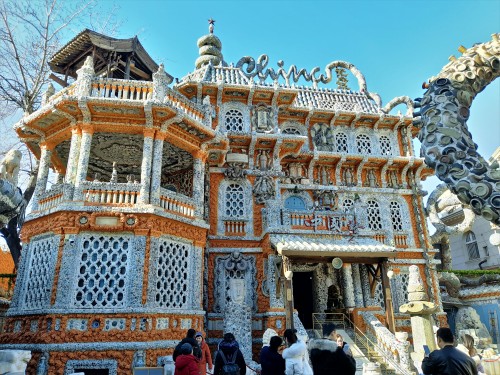
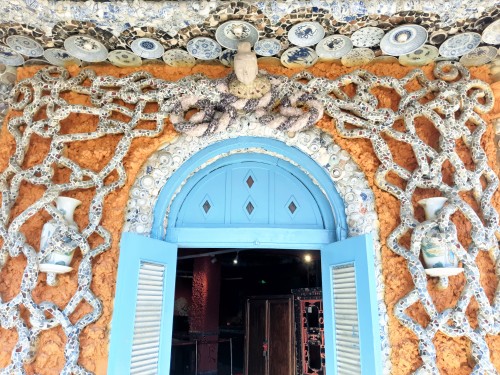

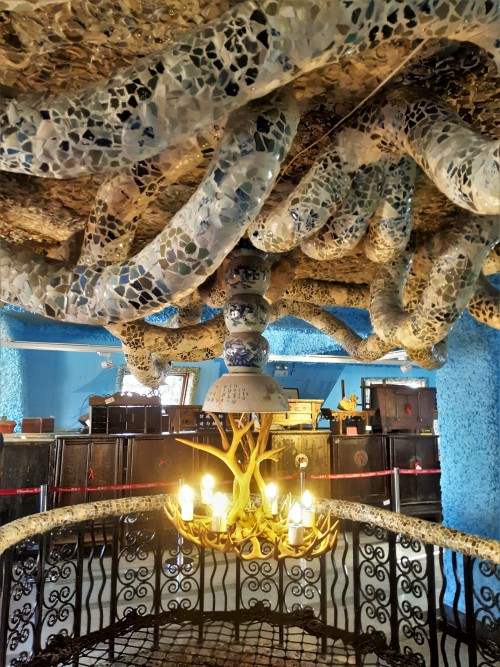
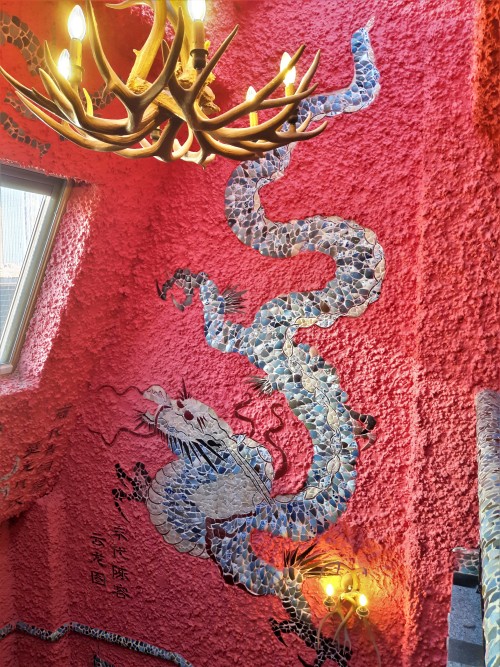
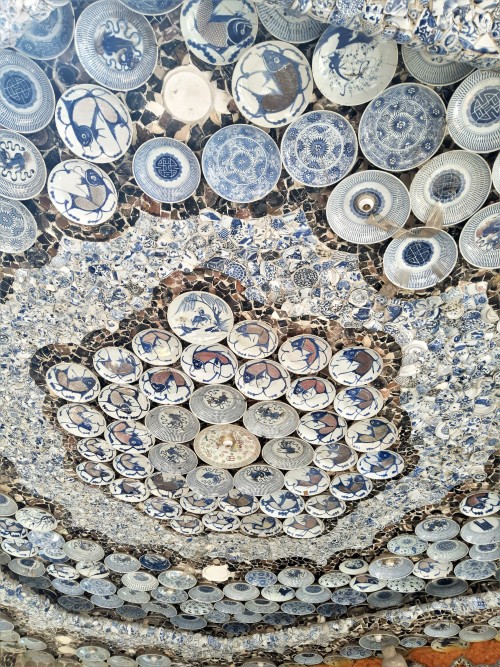
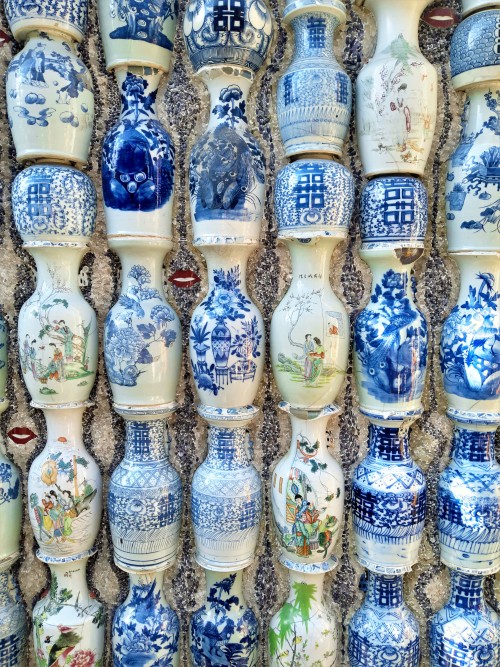
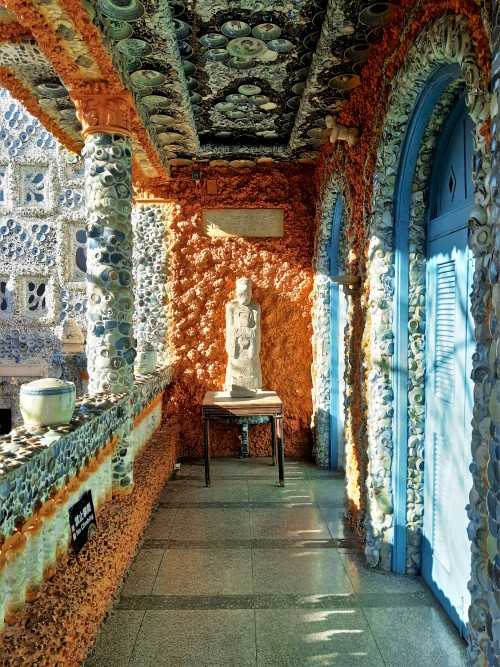
The Porcelain House in Tianjin
Hello! Do you happen to have a master post of all of your asks/posts anywhere? Just to help me navigate! ^^
Hi, thanks for the question! (Image via duitang)

For all my own posts, please see my China tag (that’s the tag I use for my original posts).For navigation via tags, my Tags page has links to common & useful tags on my blog. I’ll be updating the Tags page and this Masterpost as needed ^^.
Ziseviolet’s Replies Masterpost, Part 1 (Part 2):
Hanfu Terms:
What is Hanfu?
Guide to the different types of Hanfu
Hanfu names
My favorite Hanfu style - Part 2
Top 10 most popular Hanfu styles of 2018
Unisex Hanfu
Formal Hanfu
Difference between Ru & Shan
Banbi (half-sleeve jacket)
Bijia (sleeveless jacket)
Zhaojia (men’s Bijia)
Difference between Bijia & Banbi
Daxiushan (large-sleeve robe) - Pt 2
Difference b/w Beizi/Daxiushan/Dachang
Yuanlingpao (round-collar robe) - Pt 2 / 3
Difference b/w Tang & Ming Yuanlingpao
Hezi (chest undergarment accessory)
Weichang (short outer skirt)
Doupeng (cloak/cape)
Parallel/straight collars
U-collars (Tanling)
Aoqun & Pipa Xiu (pipa sleeves)
Jian Xiu (arrow sleeves)
Winter Hanfu - Part 1, Part 2
Casual/adventurer type Hanfu (Shuhe)
Hanfu sleepwear
Mourning Hanfu (Sangfu)
Burial Hanfu (Shouyi)
Waist-high Ruqun from Wei/Jin dynasties
Identifying Hanfu in a photoset
Chinese armor
What does Dunhuang style mean?
Hanfu History:
Did Hanfu exist after the Han dynasty
Comparison/charts of Hanfu from different dynasties
“Left-over-right” rule of crossed-collar Hanfu - Pt 2, Pt 3, Pt 4
Children’s Hanfu - Part 1, Part 2
What type of Hanfu would old women wear
Commoner’s Hanfu - Part 2
Poor people’s Hanfu
Hanfu and cleavage - Part 2
Han dynasty Ruqun & footwear
Three Kingdoms period Hanfu
Northern & Southern dynasties Hanfu
What Mulan would’ve worn
Tang dynasty emperor’s Hanfu
Was Daxiushan restricted to royal ladies
What Hanfu did people wear in winter
Song dynasty Hanfu styles
Ming dynasty skirts
Ming dynasty summer Hanfu
Yuan/Qing dynasty Hanfu - Part 1, Part 2
Symbolism of Orange-Red and Turquoise color combination
Hanfu for empress/noblewoman
Differences b/w contemporary & historical Hanfu
Books & magazines on Hanfu - Pt 2, Pt 3
Wedding Hanfu:
What are the colors of wedding Hanfu?
Wedding Hanfu recs
Pictures of wedding Hanfu
Wedding Hanfu accessories
Manchurian vs Han wedding attire
Why couples both wear red even when it’s not the traditional color for certain styles
Modernized/Modified Hanfu:
Incorporating Hanfu styles in a modern way
Combining Hanfu & modern styles
Modified Hanfu shops recs - Pt 2
Men’s modified Hanfu shops recs
Websites that sell modernized Hanfu
Where to buy modernized Hanfu
Modified Hanfu shops in the West
Identifying Chi Xia’s modernized Hanfu
Hanfu Accessories:
Pibo (long scarf) - Part 2
Tuanshan (rigid fan) - Pt 1, Pt 2, Pt 3, Pt 4
Difference b/w Tuanshan & Folding fan
Jinbu (waist ornament) - Part 2
Hebao (purse) - Part 2
My tag for Chinese hats/headgear
Weimao (veiled hat) - Part 1, Part 2
Weimao (veiled hat) Taobao Recs
Tiger hats
Douli (conical hat)
Yingluo & Xiangquan (necklaces) - Pt 2
Traditional Chinese earrings
Meaning & History of Jade
Bangshoudai (hand wraps) & Huwan (wrist guards) - Pt 1, Pt 2, Pt 3, Pt 4
Panbo (strings to tie up sleeves)
Miansha & Mianlian (Veils) - Part 2
Nail guards - Part 2
Hanfu Shoes
Hanfu boots (xue)
Hu Ban (ritual tablet)
Hanfu Hair Accessories:
Names of Chinese hair ornaments
Shop recs for hair accessories
Hanfu hair accessories
Fabric flower hairpins for Hanfu
Ronghua (velvet flowers) - buy & make
Hair accessories for fine hair
Phoenix crowns (Fengguan)
Lotus crowns
Miao silver hair accessories - Pt 1, Pt 2
Huasheng (forehead ornament)
Hairpin styling question
Fasheng (hair rope) & fakou (hair buckle)
My tag for Chinese hats/headgear
Jewelry boxes for hair accessories
Hanfu Hairstyles:
Hanfu hairstyle tutorials
Traditional hairstyles
My favorite hairstyle
Pre coming-of-age ceremony hairstyles for Han girls
Looped hairstyles in “The Empress of China”
Tang dynasty pinned peony hairstyle
Ming dynasty hairstyles
Dynasty with long loose hairstyle
Did ancient Chinese people have bangs
Half-up half-down hairstyles
Short hair and Hanfu
Simple hairstyles for shoulder-length hair
Makeup:
Huadian (forehead decoration) - Pt 1, Pt 2, Pt 3, Pt 4, Pt 5
Did men wear Huadian
Traditional Chinese makeup ingredients
Tang dynasty lip makeup
What makeup is used to replicate traditional makeup styles
Men’s Hanfu:
Hanfu styles for men
Men’s formal Hanfu
Types of men’s Hanfu
Resources for men’s historical hanfu styles
Pictures of men’s Hanfu
Dachang (open-fronted robe)
Zhiduo vs Daopao
Yesa/Yisan vs Tieli
Yichang vs Yesa/Yisan
Men’s Hanfu blog recs
Men’s Headwear/Hairstyles:
Historical hairstyles for men
Did men wear ponytails
Men’s hair accessories
Where to buy Xiao Guan
Men’s hairstyles & Guan
Guan (headdress) - Part 1, Part 2, Part 3
Guan & Mianguan
How bald men put up hair with a Guan
Fangjin (four-cornered flat cap)
Hanfu Undergarments:
Hanfu undergarments guide - Pt 2, Pt 3
Children’s Hanfu undergarments
Hanfu petticoats - Part 1, Part 2
Emperor’s undergarment for Mianfu
Dudou (chest undergarment)
Lower body Neiyi (underwear)
Zhongyi & Neiyi
Wearing Hanfu:
Tutorials on wearing Hanfu
How to put together a Hanfu outfit
Mixing hanfu from different dynasties
Plus-sized Hanfu - Part 1, Part 2
Girl wearing men’s Hanfu
Wearing Hanfu made for a gender you are not part of
Chest-high Ruqun for big-chested figures
Chest-high Ruqun skirt slippage
Is Hanfu hard to wear/sew
Is Hanfu comfortable to wear
Are chest-high styles restrictive for the chest - Part 1, Part 2
Hanfu renting/dressing up
Photo studios for renting Hanfu and taking pictures in Shanghai
Do people in China still wear Hanfu - Pt 2
Events in present-day China where people wear Hanfu
Making Hanfu:
Resources for sewing Hanfu - Pt 1, Pt 2
Hanfu sewing patterns - Pt 1, Pt 2
Buying Hanfu sewing patterns
Making Hanfu by hand - Part 2
Making Chest-high Ruqun
Making Hanfu with patterned cloth
Using shiny brocade fabric
Young people learning to sew Hanfu
Buying Hanfu & Hanfu Accessories:
My recs for places to buy Hanfu - Part 2
Where to buy Hanfu & Chinese hair accessories - Pt 1, Pt 2, Pt 3
Recs for places to buy hanfu accessories that aren’t based in China or have an English website
How to buy Hanfu on Taobao
International shipping on Taobao
Using a Taobao agent
Posts with links to where to buy Hanfu
Recs for non-Taobao Hanfu shops
Buying Hanfu in US/Washington DC
Hanfu shops in Shanghai
Where to buy Hanfu in Hong Kong
Hanfu shops in Singapore
Recs for colorful & flowy Hanfu
How to search for large-sleeved crossed-collar Ruqun on Taobao
Taobao shops that regularly carry larger sizes for men’s Hanfu
Shops that sell Hanfu w/natural fabrics
Where to find Hanfu for pageants
Hanfu from Aliexpress with right side over left
Hanfu brand Qinghuige’s Taobao page
Where to buy crane-print skirts
Where to commission high-quality screen-accurate Hanfu
How to find Hanfu for BJDs
Hanfu in films/dramas/animations, Pt 1 (more in Pt 2 of Masterpost):
Hanfu in television dramas
Q&A on cdrama “The Empress of China” is in Pt 2 of Masterpost!
Q&A on cdrama “The Rise of Phoenixes” is in Pt 2 of Masterpost!
Q&A on donghua “Modaozushi” & cdrama “The Untamed” is in Pt 2 of Masterpost!
Q&A on Mulan (including Disney’s animated & live-action Mulan films) is in Pt 2 of Masterpost!
Hanfu Revival Movement:
What direction I think the Hanfu Movement will take
The motivations for the Hanfu Movement
How I feel about the inconsistency of the Hanfu Movement
Comparison with Kimono and Hanbok:
Comparing Hanfu & Kimono (padding)
Comparing Hanfu & Kimono inspired figure skating costumes
Comparing Hanfu & Hanbok (resources)
看電視劇學中文:【開端】 第三集 【2/2】
這是第二部分,來自:【開端】 第三集 20:00-40:00 // 第一部分在這裡 你們可以在Youtube看:这里 看電視劇學中文Learn Chinese With a TV Series by Leila老師
單詞:(绿色=HSK4; 蓝色=HSK5; 紫色=HSK6)
反复 (-覆) / fǎnfù / repeatedly, over and over
药检 (藥檢) / yàojiǎn / drug test
惯 (慣) / guàn / to spoil
负担 (負擔) / fùdān / burden
从始至终 (從--終) / cóng shǐ zhì zhōng / from the start to the end
唯一/ wéiyī / only
相信 / xiāngxìn / to be convinced sth is true; to believe
交代 / jiāodài / to hand over; to explain; to brief (someone)
达成 (達-) / dáchéng / to accomplish
共识 (-識) / gòngshí / consensus
插曲 / chāqǔ / interlude (music); episode
必然 / bìrán / inevitable
炸药 (-藥) / zhàyào / explosive material or charge
痕迹 (-跡) / hénjì / mark, trace
倒计时 (-計時) / dàojìshí / countdown
装置 (裝置) / zhuāngzhì / device; to install
眼皮底下 / yǎnpídǐxia / right before one's eyes
资料 / zīliào / material, resources
人际关系 (-際關係) / rénjìguānxì / interpersonal relationships
不良 / bùliáng / bad, harmful, unhealthy
嗜好 / shìhào / habit
心理防线 (---線) / xīnlǐfángxiàn / psychological barrier
硬 / yìng / hard, stiff, firm, strong
性质 (-質) / xìngzhì / nature; characteristic
指使 / zhǐshǐ / to prompt, incite
套话术 (-話術) / tàohuàshù / testimony
依然 / yīrán / still; as before
指认 (-認) / zhǐrèn / to identify
采纳 (採納) / cǎinà / to accept
供词 (-詞) / gòngcí / confession; statement
残留物 (殘--) / cánliúwù / leftover, remains
检测 (檢測) / jiǎncè / to examine
薄 / báo / weak, thin, flimsy
没凭没据 (沒憑沒據) / méipíng méijù / no evidence (var. 无凭无据)
下面有句子:
我们会反反复复地过着一整天。We will repeatedly experience the same day.
准备药检。Prepare the drug test.
老张还是太惯着你了。 Mr. Zhang is spoiling you.
你有很重的心理负担。You have a heavy burden (in your heart/mind).
从始至终我没有向你做过自我介绍。This whole time (from start to finish) I never introduced myself to you.
对你来说,相信警察,诚实把交代问题是你的唯一的选择。For you, believing in the police and answering questions honestly is your only choice.
我们终于达成了共识。We finally reached a consensus.
公交车被引爆这才是必然。The bus exploding was inevitable.
你们是不是可以找到一些炸药的痕迹。 Could you find any trace of a bomb/explosive material?
倒计时装置是它的铃声。The countdown system is the ringtone.
在我们眼皮底下演这么一出,从目前掌握的资料来看两个人的人际关系简单。From what we see before us from the resources we've currently have, these two people have simple social histories.
没有不良嗜好。Don't have bad habits.
实际心理防线硬着呢。Really (her) psychological barrier is strong.
那可是完全不同的性质。That could be a completely different characteristic.
她指使你骗出了这个套话术。She incited you to lie on this testimony.
如果你依然不肯如实地告诉我们的话,我们最后只能采纳他指认你是案一的供词。If you still won't agree to honestly tell us (the truth), (then) we have no choice but to accept his identification of you as the case's only confession.
事故现场检测出了爆炸残留物。At the accident site, examine the explosion's remains/residue.
心理防线薄。Weak psychological barrier.
没凭没据什么关我。There is no evidence that it was related to me.
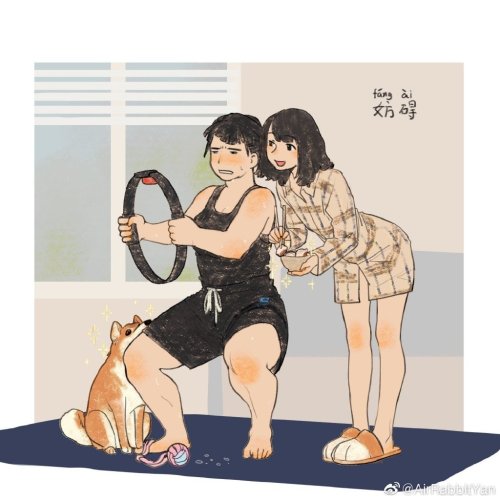

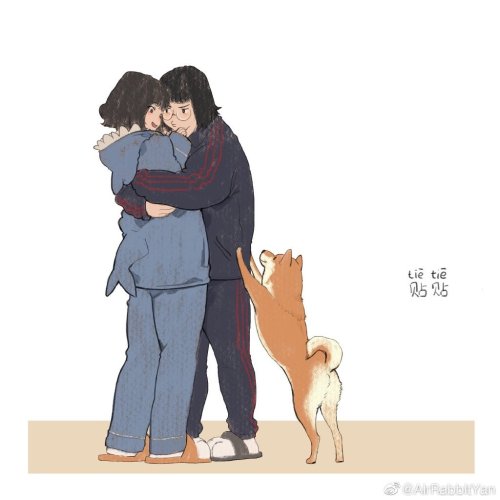
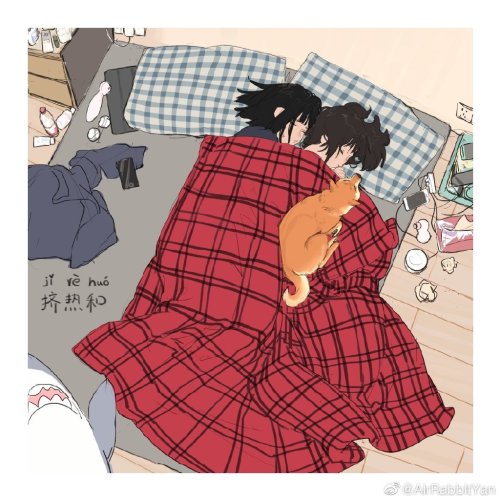
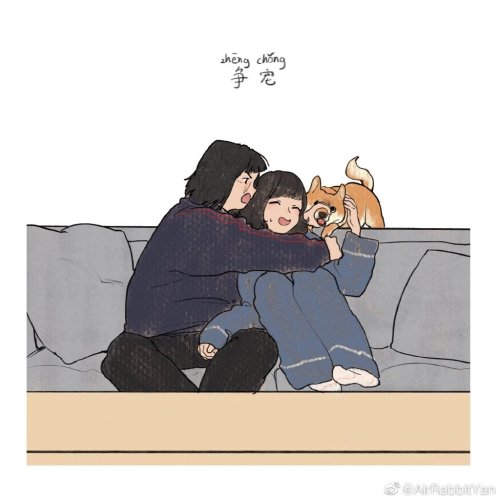
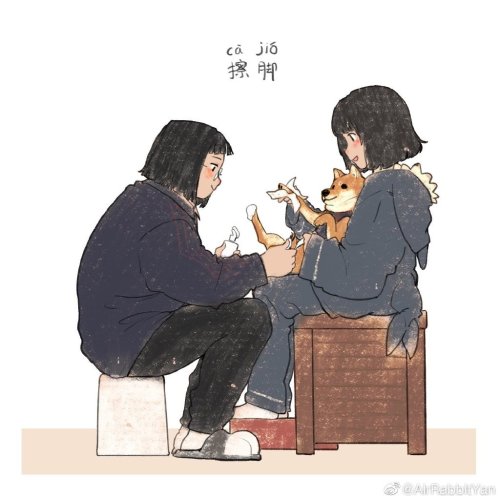
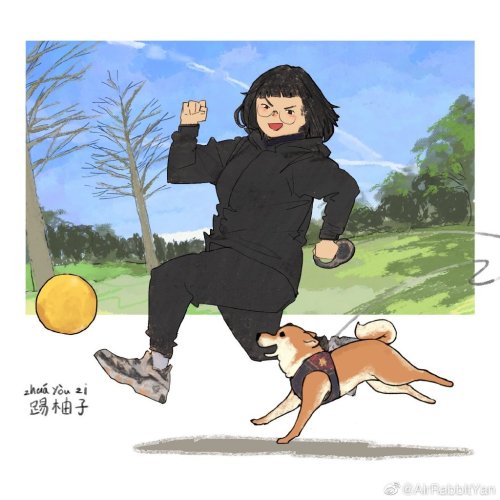
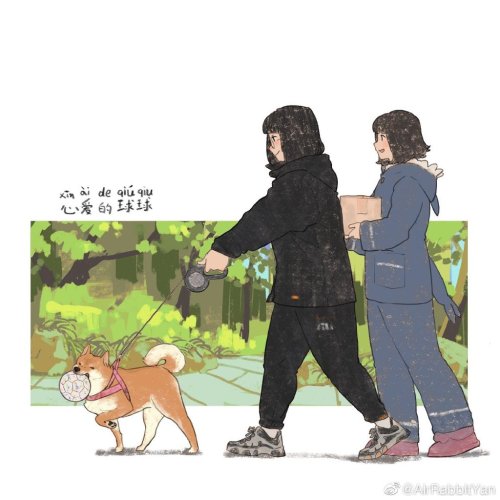
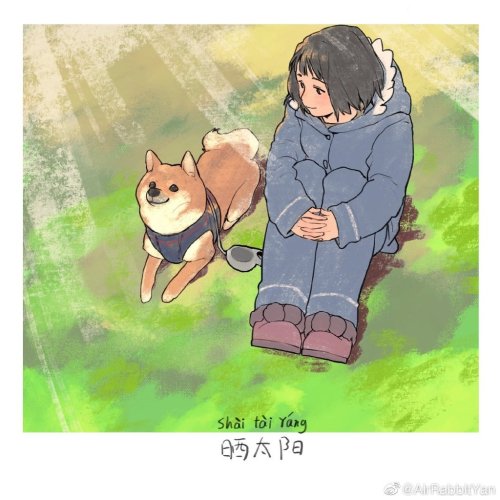
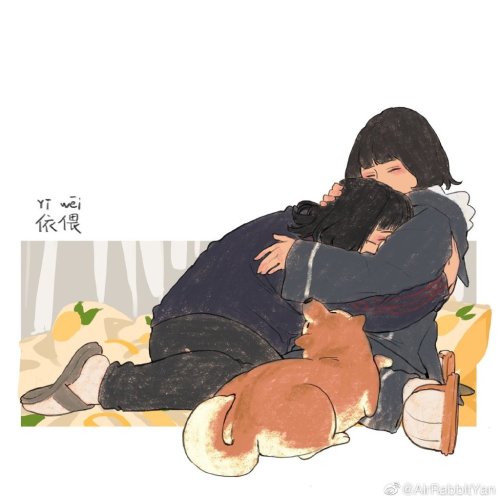

©AirRabbitYan
-
 the-cooler-dracula reblogged this · 5 months ago
the-cooler-dracula reblogged this · 5 months ago -
 the-cooler-dracula liked this · 5 months ago
the-cooler-dracula liked this · 5 months ago -
 suppuration reblogged this · 5 months ago
suppuration reblogged this · 5 months ago -
 suppuration liked this · 5 months ago
suppuration liked this · 5 months ago -
 irregulation liked this · 5 months ago
irregulation liked this · 5 months ago -
 selkiipon liked this · 6 months ago
selkiipon liked this · 6 months ago -
 tapiocapearls-inyourbed liked this · 6 months ago
tapiocapearls-inyourbed liked this · 6 months ago -
 annoyinglyvague liked this · 6 months ago
annoyinglyvague liked this · 6 months ago -
 potatoattorney liked this · 7 months ago
potatoattorney liked this · 7 months ago -
 owlrufflerence reblogged this · 7 months ago
owlrufflerence reblogged this · 7 months ago -
 too--dazed liked this · 7 months ago
too--dazed liked this · 7 months ago -
 hauntedplaidvoidpizza liked this · 9 months ago
hauntedplaidvoidpizza liked this · 9 months ago -
 the-trashcan-studios liked this · 10 months ago
the-trashcan-studios liked this · 10 months ago -
 hydroproxyee liked this · 10 months ago
hydroproxyee liked this · 10 months ago -
 witch-gamer liked this · 11 months ago
witch-gamer liked this · 11 months ago -
 argentiswifee liked this · 11 months ago
argentiswifee liked this · 11 months ago -
 tvirus009 liked this · 11 months ago
tvirus009 liked this · 11 months ago -
 tired-nottired-constantlytired liked this · 1 year ago
tired-nottired-constantlytired liked this · 1 year ago -
 perfectwombatglitter reblogged this · 1 year ago
perfectwombatglitter reblogged this · 1 year ago -
 perfectwombatglitter liked this · 1 year ago
perfectwombatglitter liked this · 1 year ago -
 aloodonut reblogged this · 1 year ago
aloodonut reblogged this · 1 year ago -
 aloodonut liked this · 1 year ago
aloodonut liked this · 1 year ago -
 sumeria liked this · 1 year ago
sumeria liked this · 1 year ago -
 poodle-poet reblogged this · 1 year ago
poodle-poet reblogged this · 1 year ago -
 poodle-poet liked this · 1 year ago
poodle-poet liked this · 1 year ago -
 aethslove reblogged this · 1 year ago
aethslove reblogged this · 1 year ago -
 aethslove liked this · 1 year ago
aethslove liked this · 1 year ago -
 pokemoniker liked this · 1 year ago
pokemoniker liked this · 1 year ago -
 fallenangels1995mademecry reblogged this · 1 year ago
fallenangels1995mademecry reblogged this · 1 year ago -
 aceofsharks liked this · 1 year ago
aceofsharks liked this · 1 year ago -
 nextzhen reblogged this · 1 year ago
nextzhen reblogged this · 1 year ago -
 camshaft22 liked this · 1 year ago
camshaft22 liked this · 1 year ago -
 minhosbitterriver liked this · 1 year ago
minhosbitterriver liked this · 1 year ago -
 thenuggetstealer liked this · 1 year ago
thenuggetstealer liked this · 1 year ago -
 ziyah20000 liked this · 1 year ago
ziyah20000 liked this · 1 year ago -
 gothgleek liked this · 1 year ago
gothgleek liked this · 1 year ago -
 afroditekillsdemons liked this · 1 year ago
afroditekillsdemons liked this · 1 year ago -
 mxmischievious liked this · 1 year ago
mxmischievious liked this · 1 year ago -
 paulinaruiz928 liked this · 1 year ago
paulinaruiz928 liked this · 1 year ago -
 eivdkn liked this · 1 year ago
eivdkn liked this · 1 year ago -
 sparklynarwhal7 liked this · 1 year ago
sparklynarwhal7 liked this · 1 year ago -
 alonesova liked this · 1 year ago
alonesova liked this · 1 year ago -
 cinnamonsera liked this · 1 year ago
cinnamonsera liked this · 1 year ago